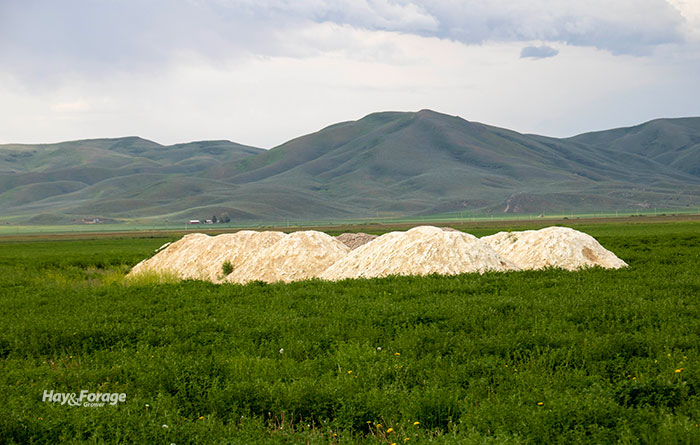
Whether you’re considering a liquid or limestone calcium supplement, Charles White, an assistant professor of soil fertility and nutrient management at Penn State, suggests you calculate the calcium values per unit to find the most cost-effective product for your farm.
Marketing does a great job of swaying you into buying products, which is why it is important to sort the truth from just a convincing advertisement.
Liquid product
“Most liquid calcium products I encounter are a solution of dissolved calcium chloride,” White explains. “They have a density of around 11 pounds per gallon and a calcium analysis of 10% by weight.” But what does this really mean?
The math reveals that there are 1.1 pounds of calcium per gallon. A typical recommendation for liquid products is 2 to 5 gallons per acre, which results in 2.2 to 5.5 total pounds of calcium on an acre of soil.
Liquid calcium products are soluble but do not always have an instant effect on soil pH. The calcium ion in liquid products may displace hydrogen ions, but it does not create hydroxide ions, which are needed to reduce soil acidity.
“One of the most dubious claims I have seen on liquid calcium products is that they are superior sources of calcium compared to limestone because they are not diluted,” White says. He also mentions that product literature does not include that only 10% of the product is actual calcium, or that the other 90% of the product has little value as a soil amendment.
Limestone
Assuming it is pure calcium carbonate, limestone contains 800 pounds of calcium per ton. Limestone does, however, take several months to be absorbed. “If your soil really needs help with calcium levels, it is better to use limestone and wait six months,” White recommends.
In terms of acidity, limestone’s major component, carbonate, is better able to create hydroxide molecules (OH-) than its liquid counterpart. This carbonate is what helps to raise the soil pH.
An easy decision
White explains, “The plow layer (6.66-inch depth) of a typical agricultural soil in Pennsylvania already contains 2,600 pounds per acre of exchangeable calcium.” Adding recommended rates of liquid calcium provides less than 10 pounds of calcium per acre, yet a gallon of liquid calcium costs about the same as a ton of limestone.
“Based on the actual calcium content, the chemistry, and the cost of liquid calcium products, it becomes very clear that they are no rival to traditional limestone for supplying the calcium and acidity neutralization needed in ag soils,” White concludes.

C.J. Weddle is serving as the 2020 Hay & Forage Grower editorial intern. She currently attends Mississippi State University, majoring in agricultural education, leadership, and communications. She grew up on a farm in Vardaman, Miss., where her family raises sweet potatoes and soybeans.

